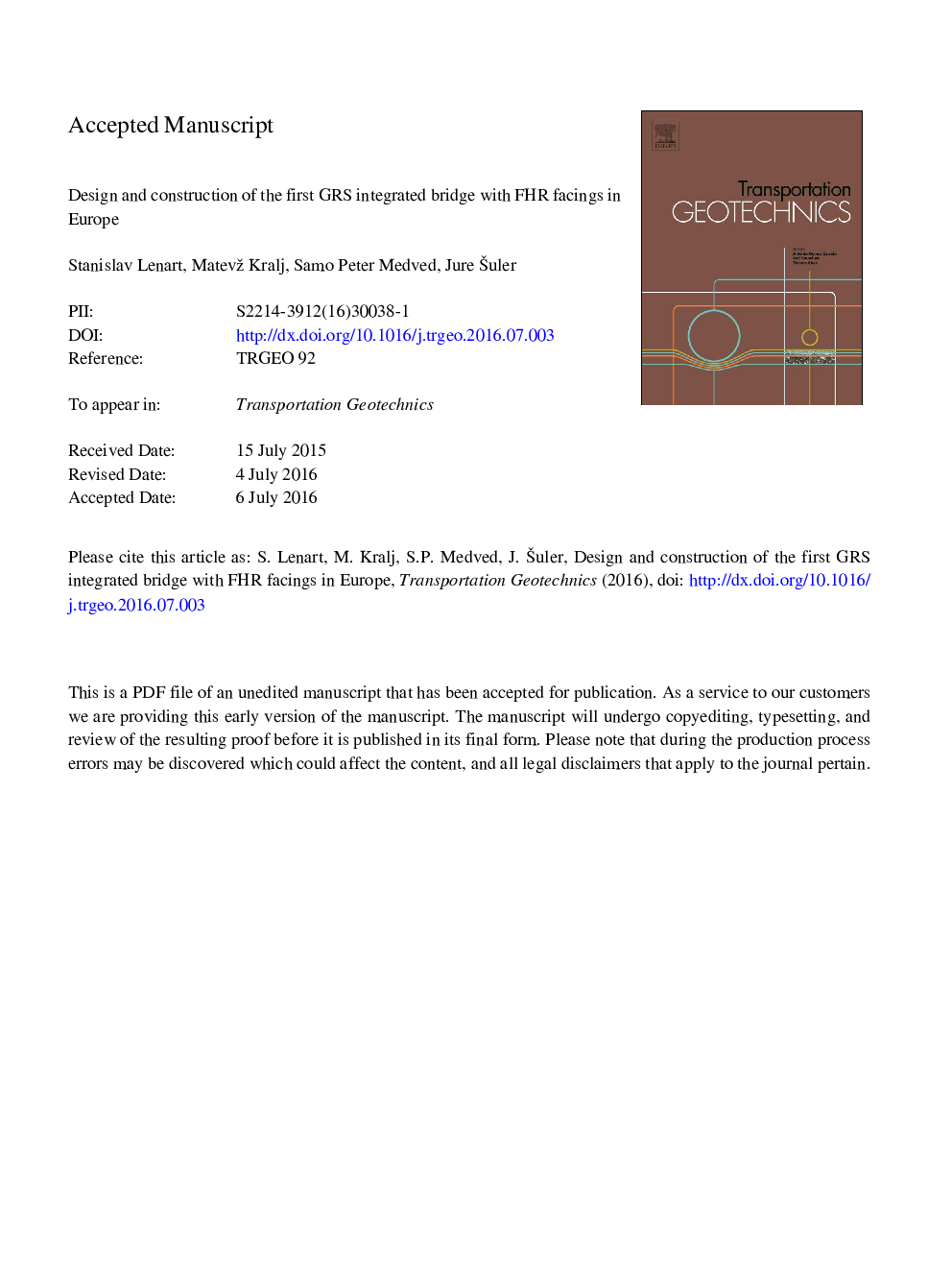| کد مقاله | کد نشریه | سال انتشار | مقاله انگلیسی | نسخه تمام متن |
|---|---|---|---|---|
| 4928810 | 1432160 | 2016 | 14 صفحه PDF | دانلود رایگان |
عنوان انگلیسی مقاله ISI
Design and construction of the first GRS integrated bridge with FHR facings in Europe
دانلود مقاله + سفارش ترجمه
دانلود مقاله ISI انگلیسی
رایگان برای ایرانیان
موضوعات مرتبط
مهندسی و علوم پایه
علوم زمین و سیارات
مهندسی ژئوتکنیک و زمین شناسی مهندسی
پیش نمایش صفحه اول مقاله

چکیده انگلیسی
The bridge across the Pavlovski potok stream in the village of Žerovinci in northeast Slovenia is a part of the investment into the modernisation of the Pragersko-HodoÅ¡ railway line, one of the biggest investments in the infrastructure in Slovenia at the moment. Its design was accompanied by very short deadlines and a deep layer of soft foundation soil. For this reason the reinforced concrete abutments of a nearby railway bridge were founded on 24 m deep piled foundations. Short deadlines and a limited budget forced the authors of this paper to find an alternative solution. Deep piled foundations were replaced by shallow foundations made of compacted fill material reinforced with geosynthetics. The bridge was completed by the end of 2014. From the results of previous laboratory tests that were obtained within the scope of the EU co-funded research project “Research voucher”, the basic characteristics of the building materials for the geosynthetic reinforced soil (GRS) bridge abutments, as well as the deformation properties of the typical reinforced soil were obtained. These data were used for the design of the abutments. The staged construction procedure of full height rigid (FHR) facings for the GRS retaining walls (RW) was used for the construction of this GRS integrated bridge. Partial pre-stressing of geogrids and consequently the increased stiffness of the reinforced soil was achieved by following the staged construction procedure. The bridge system consisted of a cast-in-situ RC slab, which was placed on top of the GRS immediately behind the FHR facings, i.e. the bridge was constructed as a simply-supported slab supported by a pair of GRS abutments, without the use of bearings. Thus the described bridge across the Pavlovski potok combines two approaches for GRS integrated bridge design, one of which has been used in Japan (Tatsuoka et al., 2009), with full structural integration of the deck onto the pair of FHR facings, other being proposed by the FHWA (Adams et al., 2010), without full integration of the deck onto the GRS RWs. A system for the monitoring of structure performance was established in order to ensure optimization of this kind of structure. Data for this GRS integrated bridge, which were obtained during the construction works were compared to similar data obtained from the construction of a nearby railway bridge with reinforced concrete abutments. The comparison provides a good basis for future decisions when choosing the type of bridge abutments.
ناشر
Database: Elsevier - ScienceDirect (ساینس دایرکت)
Journal: Transportation Geotechnics - Volume 8, September 2016, Pages 26-34
Journal: Transportation Geotechnics - Volume 8, September 2016, Pages 26-34
نویسندگان
Stanislav Lenart, Matevž Kralj, Samo Peter Medved, Jure Šuler,